I have written various posts about this over time but the issue remains important and the ‘solutions’ not known by everyone. Of course it is much more vital on a longer trip. If you are an ultralight hiker by now you will have discovered that it is not that hard to keep your skin out weight below around 5 kg including perhaps even the means to hunt and fish (eg a Pack Rifle and ultralight fishing kit) to supplement your food supply and so keep you going even longer (and including important survival gear such as rope, a Sat Phone and a Sat Messenger as well as a reasonably comprehensive First Aid Kit).
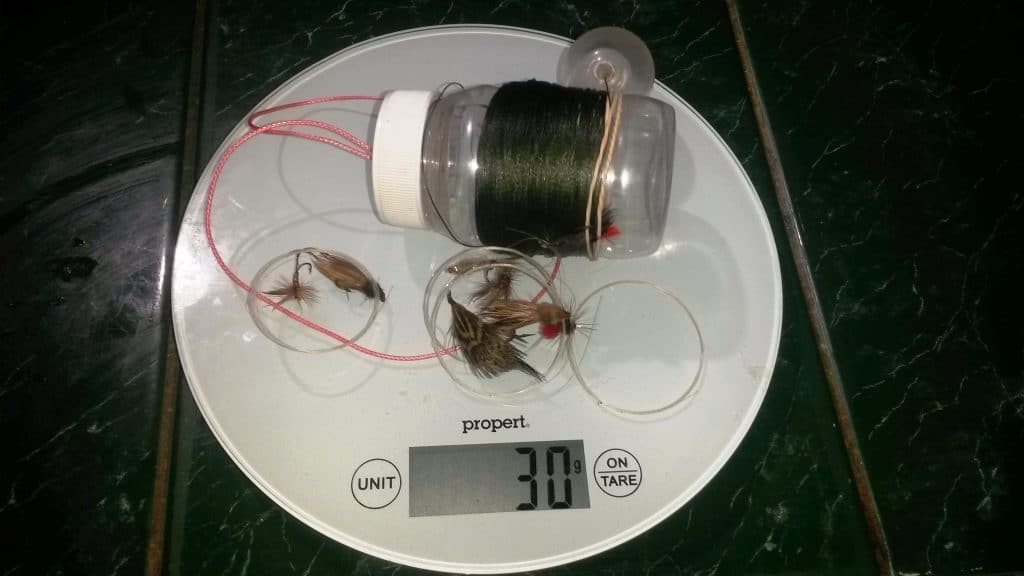
I usually carry a bit under 500 grams per day in food and fuel, so adding 5 kg to the above total will give me at least an enjoyable ten day trip at approx 10 kg (22 lbs) not counting water. Most healthy people could easily start out with 10 kg more than that, so a 30 day trip is easy enough – anyway when you are young! If you are going where fish and game are plentiful (and you have the skill to take them) then you can easily shorten your rations to 250 grams per day and supplement with fresh-caught game of various sorts, so that a 60 day unsupplied trip is not exceptional, but there will be no bathrooms or laundromats along the way so you must needs shift.
If you can’t keep yourself and your clothes clean you risk a variety of problems so you should give some thought to how it is best done. I guess if you are only out of doors in the warmer months then it is fairly easy just to bathe in the rivers and streams, to wash your clothes whilst you do so and to let them dry on your body as you walk along. I confess I have used this strategy for many years even in cooler weather (say 13C days and 0C nights) though now I am over seventy I do find my courage is waning as I come to the cold daily plunge into an icy winter stream.
My wife Della has always favored the APC or Sponge Bath approach which I have lately come to adopt more and more too. One advantage is that only a small surface area is wet at any one time so it is not so stressful on a chilly day as say a swim or shower may be. If you use a simple twig fuel stove such as my 20 Gram Roll Up Titanium Hobo Stove it is not very difficult to warm enough water to quite thoroughly wash yourself, though I find I need to warm some more to wash my hair separately when it really needs it every 2-3 days perhaps.
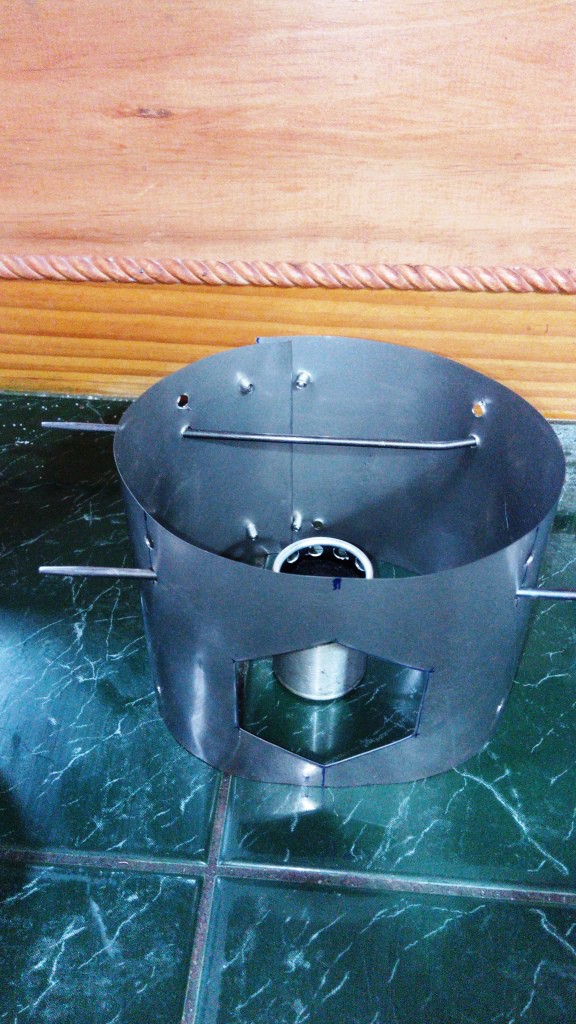
I usually carry an 1100 ml billy which is just enough for cooking for two and for heating enough water (sequentially) for either of the above purposes. We usually make camp fairly early (say around 3:00 pm) so we have time (if we need it) for a wash and to dry off and warm up again with a hot cuppa before a cheery fire out the front of our tent before the night really cools down. We usually camp/hike in the cooler months too!
I was very proud of my ‘Bathtime on the Trail‘ adaptation of a Platypus bottle as a trail shower, but I use it less and less. In a similar vein my DIY Hiking Bidet was an ingenious idea which I seldom use – perhaps on a longer trip? Usually a bit over a week is all we can spare away from the sheep and the farm though. For Ultralight Personal Hygiene I usually use this strategy.
Shower
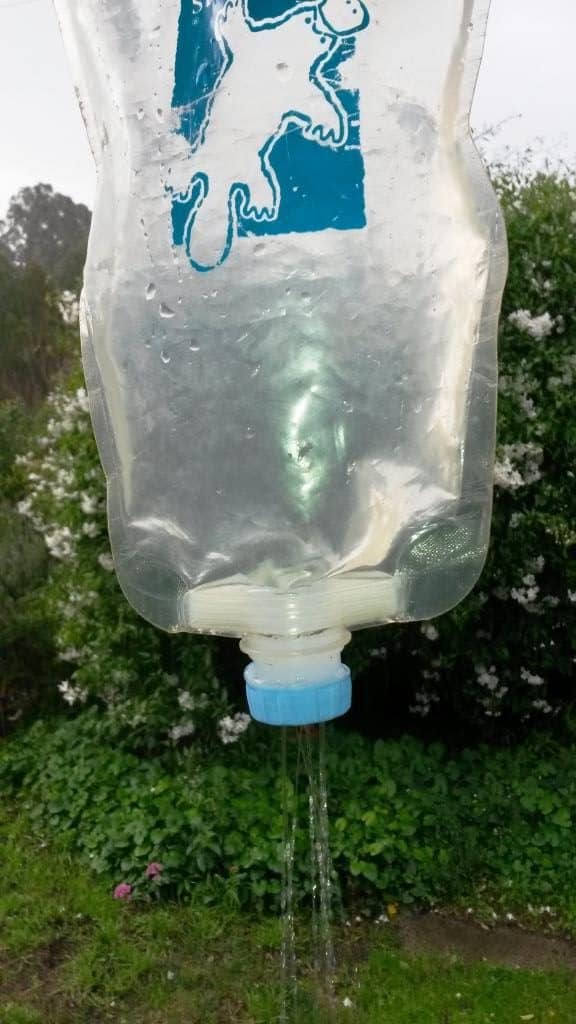
Bidet
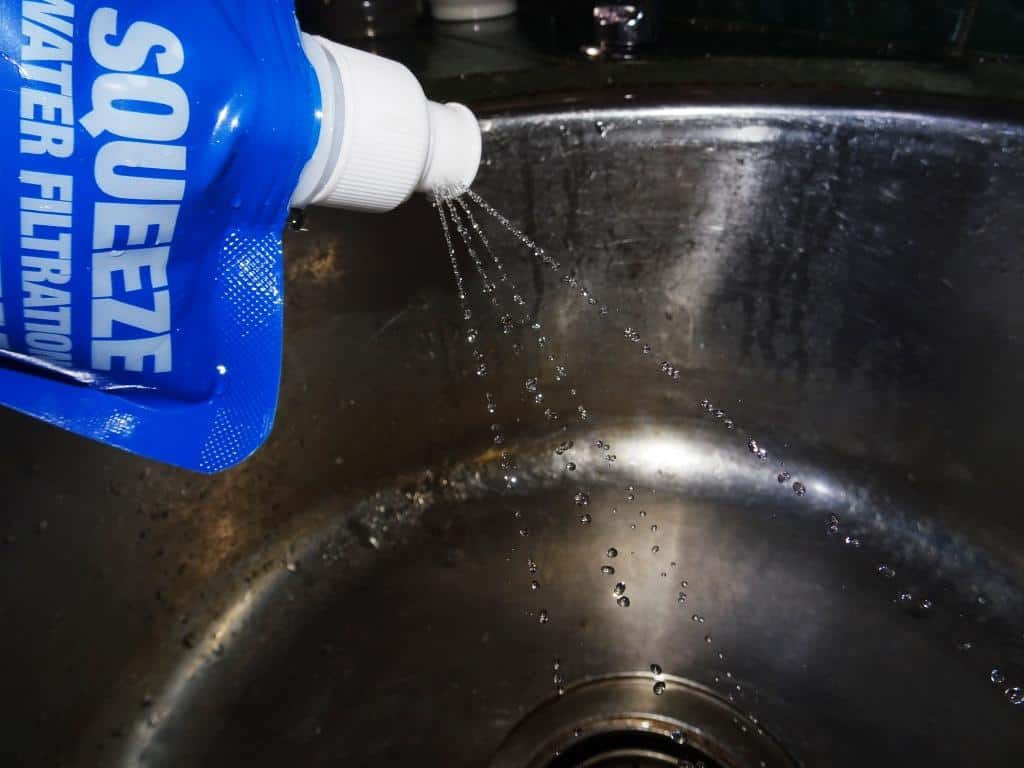
Of course you may also want to wash your clothes too, and particularly your underwear and socks whose hygiene is so important to protect you from blisters and fungal infections. It helps to have a couple of pairs of these (and it is certainly pleasant to have dry socks of a night) so an Ultralight Clothes Line and Ultralight Clothes Peg are useful ideas which you could think about adopting.
As you will have seen I always incorporate a clothes line in my tents and as my tents are always warmed by a pleasant fire out the front it is easy enough to dry your clothes of an evening. So long as you have a dry change for the evening (wool thermals are great) then you can easily wash and dry your hiking clothes each day if you so desire. Similarly you can dry your shoes if they are wet whilst you wear your Sub Ounce Per Pair Camp Shoes. Of course I am almost always only out and about like this in the cooler weather when having a fire is both possible, safe and desirable.
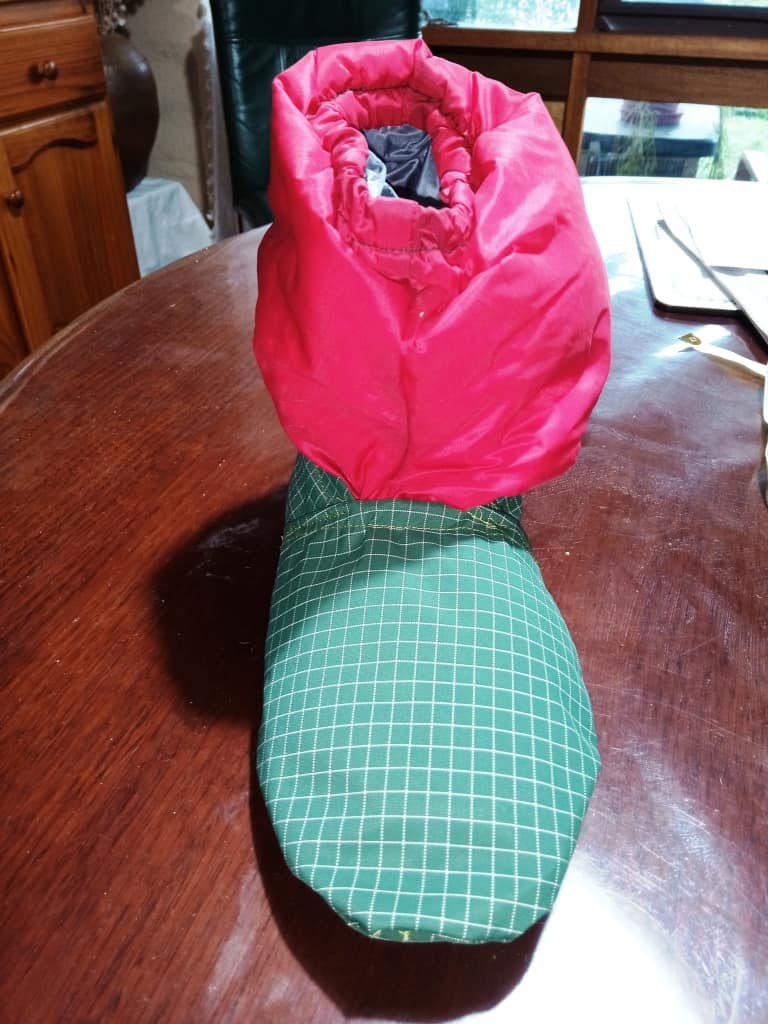
You should always have wet hiking shoes. When you come to a stream you have to cross just walk right through it. You should not be messing about seeing whether you can cross without getting your feet wet. That is just a recipe for injury as is taking them off and crossing bare-footed. Have a dry change for the end of the day. I suppose if you are exclusively a trail walker and the trails you walk on all have bridges it may be different, but who would seriously want to walk along such an ordered and undoubtedly crowded route? We almost never walk on trails but instead make our way through the trackless bush wherever we wish to wander.
It is better for your feet anyway to have a break from your hiking shoes. When you are sitting in your tent it is probably best to have nothing at all on your feet so they can breathe and recover. This is so much easier if your tent is warm and you just have simple slip-ons such as the above when you need to go outside to throw another log on the fire or whatever.
You should not have blisters or damaged toe-nails. If you are having problems with your feet you need to review your foot strategy. You should read this post Foot Care
As an aside it is really important that all your clothing (but particularly that which comes in contact with your skin) is not polyester or nylon but instead some natural fibre. Wool is best. Of course cotton is a serious problem in cold weather because of how it adds to the danger of hypothermia on account of how much water it absorbs and how slowly it dries.
Wherever possible chose wool or eg viscose (wood fibre). Sometimes you can get a blend. If you have to pay more, just do. Icebreaker are very good. It is not just that those synthetics will make you stink something awful; they will also contribute enormously to the danger of fungal infections on account of how they increase humidity next to the skin (why they make you stink so too). You will also get horrible burned in them if there is a fire. (BTW: It is possible to buy cheap poly/viscose clothing which will not stink much and will dry quickly from workwear shops).
If you have never had a really nasty fungal infection in the crotch, underarms of feet, you are in for a very unpleasant surprise sometime. (Do carry some Betadine – it is useful for all sorts of wounds and other things besides). I have seen people whom I thought might die from them – they were so awful and they were suffering so much! Perhaps they did!
NB: These are the #1 areas you must keep clean and hygienic (as well as well lubricated) especially your feet and between your legs – hand cream for the former; foot balm for the latter. If there is a day you do not or cannot wash, then (antiseptic) wet wipes at the end of the day’s walk and after a toilet stop are a must!
Neither you nor your clothes need ever be dirty if there is a mountain stream like this nearby. For comparison, look how clean Spot and Honey are!
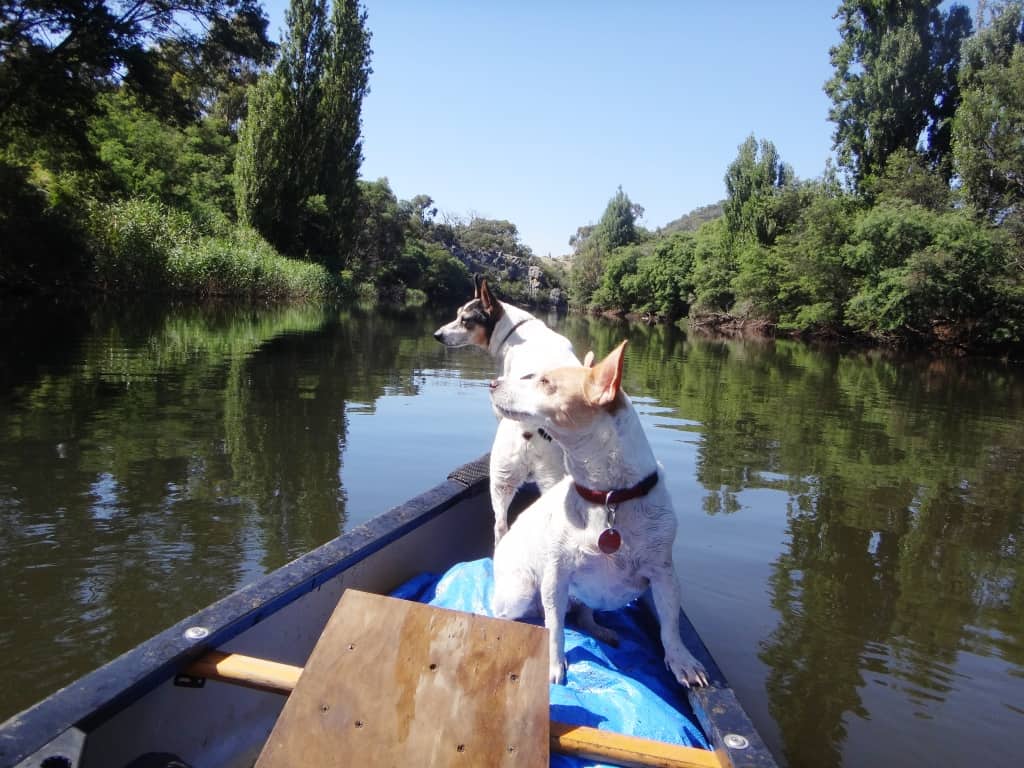
See Also:
20 Gram Roll Up Titanium Hobo Stove
